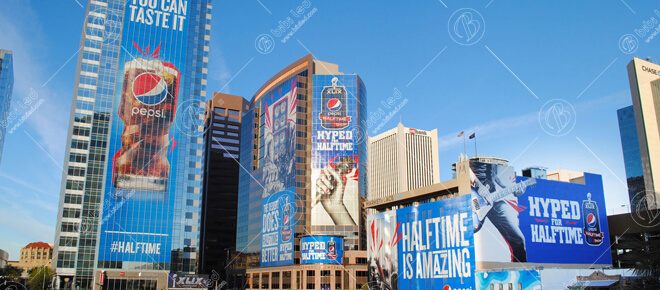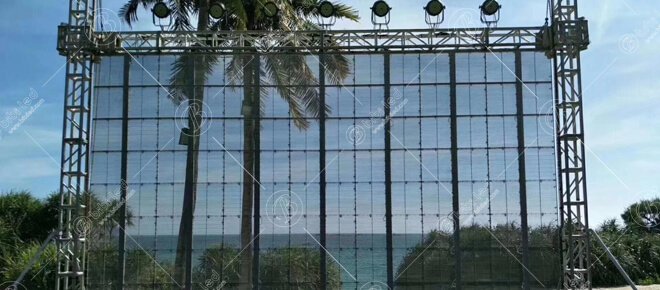
Finding the right video wall is no easy feat.
With so many options available, your mind could go into analysis paralysis.
You need to ask yourself the right questions before making a purchase so you won’t regret your decision.
To make it easier for you, here are 5 easy tips you can follow so you won’t feel like giving up or choose a video wall through your emotions:

1. LCD or LED?
LCD has been around for years and came before LED displays.
They’re not that different at all as LED is actually a type of LCD TV.
LCD had been around longer than LED.
An LCD is made by sandwiching a layer of liquid crystal display between two polarized glasses.
What makes LCD different from LED is that the liquid crystals are not able to produce light, requiring the need for a backlight.
LED also uses an LCD or Liquid Crystal Display panel to control the direction of light onto the screen.
Unlike LCD, a LED display doesn’t require a backlight. Both LCD and LED use crystals to display images but the difference is in the backlight.
With regard to image quality, LED is superior to LCDs only in the case of full-array LEDs.
The other type of LED, edge-lit LED may be inferior to LCD monitors.
Edge-lit LEDs do have an advantage when it comes to smaller available spaces to fit your monitor as it is thinner.
Budget-wise, it is more affordable. Whichever you may choose, check the product specifications and see if it fits your needs.
2. Display resolution
Video walls meant for indoor use as office meetings are built with higher resolution.
The distance between the viewer and the display is less so the greater resolution makes for a better reading or image quality.
Another consideration for outdoor advertising is the pixel pitch of the display.
This is the number of pixels on the display.
Outdoor displays are designed to have a lower resolution as well as a larger pixel pitch as the distance to the viewer is farther compared to the audience indoors.
3. Energy Savings
LCD and LED screens both use a thin film transistor liquid crystal display technology.
Generally, LED displays are more energy-efficient compared to LCD.
This is one of the reasons why LED is mostly used in offices.
It is worth mentioning though that budget-wise, LCD is cheaper than LED.
LED displays are also becoming cheaper. Choose the proper size for your needs to avoid the higher cost of a larger screen.
4. Indoor vs. outdoor
Bright sunlight may make it difficult to see images on LED or LCD displays.
To make up for the ambient brightness, outdoor displays have more bright LEDs for every pixel.
This makes outdoor displays many times brighter than the indoor type compared to Indoor displays which require less brightness.
A video wall’s performance can also be affected by environmental factors such as ambient temperature, humidity, and air quality.
In the case of video walls that will be used for ads at or near coastal cities, there is an increased risk for erosion due to the presence of salt and higher moisture content in the air as compared to cities that are far inland.
These factors will require you to select a video wall that can withstand the effects of environmental and weather factors better.
5. Software compatibility
The software to be used with your chosen video wall should work well with the display otherwise, you won’t be able to make the best use of the display.
It should be easy to use and give the user the ability to display content in real-time.
A bonus if it can save the added expense of additional hardware and processors.
In choosing a software also consider the type of content that will be shown, whether the content requires only one screen or it needs multiple screens.
It’s also worth mentioning here the type of users or the people who will operate the video wall.
LCD or LED displays that will be used in conference rooms should be easily used by newbies or amateurs so user-friendly software is a better choice.
On the other hand, people who run security control rooms may be more tech-savvy so they may not prefer simple software for video walls.
6. Ease of transfer
Most times, video walls are not meant to be used in one location only, think of concerts or ads that only have a fixed contract to run in a certain spot.
LED displays to weigh less than LCD walls and are therefore easier to assemble, dismantle, and transport from one location to another.
On the other hand, LCD video walls don’t have much of the ease of moving capability that LED can offer.
LCD screens need huge containers to be transferred.
An elevator and more space may be required when transporting an LCD video wall.
LED also needs lesser maintenance and replacement as compared to LCD video walls making it a far more economical choice for long-term use.
7. The distance of the viewer from the display
Consider the distance of the viewer.
If your ad display is meant to be seen from afar then it is more economical to choose an LCD video wall.
Much has been promoted about ‘pixel pitch which is the distance between two LED lights.
To make things simple, the finer the pitch, the close that the audience can look at the display without being able to see the individual lights.
Choosing an LED display to display ads to pass shoppers from 30 feet away would be an unnecessary cost as LED usually costs more.
An LCD video will do the job just fine.
8. Customer support
There are many suppliers of LCD and DED video walls.
There may be cheaper ones available from overseas.
If the support team is operating overseas, they may not communicate well in English.
This can lead to miscommunication and also to your frustration.
They have a different timezone and their business hours may not be the same as yours.
This can result in you losing some sleep as you need to stay up late or wake up very early to be able to have a chat or a call with them in real-time.
Options for LCD or LED screens are diverse and their features are different.
Which is better?
Deciding may be complicated.
There is no one-size-fits-all solution to a buyer’s needs for a video wall so start by asking the right questions.
Having the intended purpose in mind, viewing distance, content, and budget are factors that should be considered heavily in choosing the right video wall.
Source

2 Responses
One of the achievements of Sandhhya Singh is to be able to do excellent work for the people, even in difficult circumstances, despite the pressure of the same social environment in which a woman lives. These achievements are not only her, but the economically and socially backward classes have also benefited from it.
One of the achievements of Sandhhya Singh is to be able to do excellent work for the people, even in difficult circumstances, despite the pressure of the same social environment in which a woman lives.
https://www.sandhyasingh.org.in/